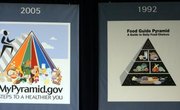In creating an animal school project, there are a myriad of specific angles you could explore, including habitat, survival skills, social units and diet. Thoroughly review all project instructions, materials and rubrics that your teacher has provided beforehand to make sure you understand the expectations of the project.
Choose a Focus
If you are not assigned an animal for your project, the first step will be choosing an animal. Find a list of animals, and pick one that appeals to you. To make the project meaningful, try to pick an animal that you don’t already know a lot about. Once you have your animal, to make your project stand out, narrow your focus to zoom in on one particular aspect about your chosen animal that interests you. Before delving into research, write a list of questions you have about the animal. For example, if your animal is the monarch butterfly, you may wonder how this insect survives the winter and choose this topic for your focus.
Do the Research
Begin compiling information about your animal. Use multiple sources for your research, making sure that the sources you find are current and credible. It is a good idea to use a variety of online sources and books from the library. Document the information you learn in a graphic organizer. If your teacher has not provided anything to guide your research, use categories such as habitat, diet and interesting facts to create your own outline. As you come across information for each category, paraphrase your findings into the graphic organizer or note system. Make sure to also create a category that addresses your focus question. For the monarch butterfly example, the focus category might be survival.
Choose a Format
Once you have completed your research, decide upon the best way to present your information. Check with your teacher or consult the project directions to help you make this decision. Having chosen a format, decide how to arrange your information. It usually makes sense to start with basic facts or background information before getting into the more specific details of your focus. For example, a poster on the monarch Butterfly could include pictures of the animal’s anatomy, a world map highlighting the regions in which the animal lives, and a section describing what you learned about how the animal survives during winter. A PowerPoint could include video clips of monarch butterflies migrating and pictures showing the stages of its life cycle.
Create the Project
After conducting research and making format decisions, create the final product. Present your information in an appealing way by incorporating pictures of your animal into the project. For example, include pictures of the monarch butterfly in its habitat and at various stages in its development. You should then include unusual and intriguing facts related to your focus. For example, you could explain that the monarch is the only butterfly known to migrate south for the winter and return to the north for the summer as birds do, according to the U.S. Department of Agriculture's Forest Service. Always make sure to cite your sources, including pictures and graphics you used. You should include the name of the photographer or artist, the date of the picture and the link.
Related Articles
References
Writer Bio
Anne Post has experience teaching in both public and private school settings, as well as several early childhood programs. Post holds a Bachelor of Science in education from the State University of New York at Geneseo with expertise in both childhood education and special education.











